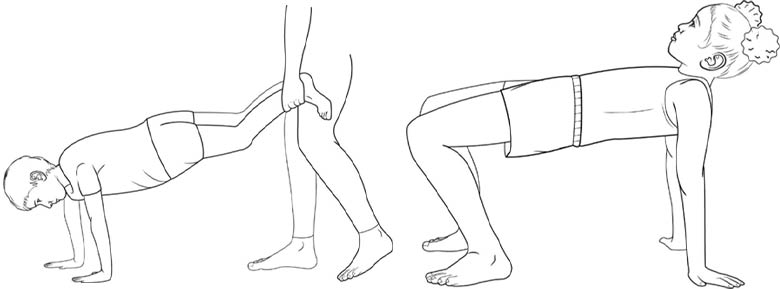Activities to Develop a Child's Sense of Touch in the Hands
These instructions for Children's Hospital of Philadelphia (CHOP) patients describe exercises and activities to improve your child's sense of touch.
Important information:
A child's ability to understand touch signals sent from the hands to their brain is very important in the development of fine motor skills. If a child cannot understand the touch signals from the hands, they may need to use their eyes for help. Using their eyes requires more concentration and they may easily become frustrated and tired.
Patient instructions: activities to improve your child's understanding of touch information
-
Apply hand lotion with firm pressure.
-
Work with modeling clay, putty and stress balls.
-
Bear weight on hands: crab walking, wheelbarrow walking, chair push-ups, lying over a large ball, chair or cushion and support themself with hands on the floor.

-
Toss a heavy ball between hands.
-
Play tug-of-war with straws, towels or rope.
-
Play with objects of different textures: feathers, carpet samples, dry washcloths, felt and fake fur.
-
Write with a vibrating pen.
-
Hold a vibrating toy.
-
Finger paint, add texture with sand or rice for variety.
-
Draw in a pile of shaving cream or whipped cream. Add sand or rice for texture.
-
In a shallow pan, use your fingers to draw in pudding, Jell-O or oatmeal. Your child can then lick their fingers.
-
Draw letters and shapes with chalk on a carpet square and have your child erase them by going over the writing with their fingers.
-
Mystery writing: write letters, words and shapes with eyes closed. Hide common objects in a container or bag. Have your child reach into the bag and try to name the object based on how it feels.
-
Find objects hidden in a container of rice, sand, beans or noodles. Practice spelling and reading by searching for Scrabble letters and making words.
Contact your therapist with any questions.
Reviewed on January 10, 2023, by Meghan Burkhardt, MS, OTR/L, BCP